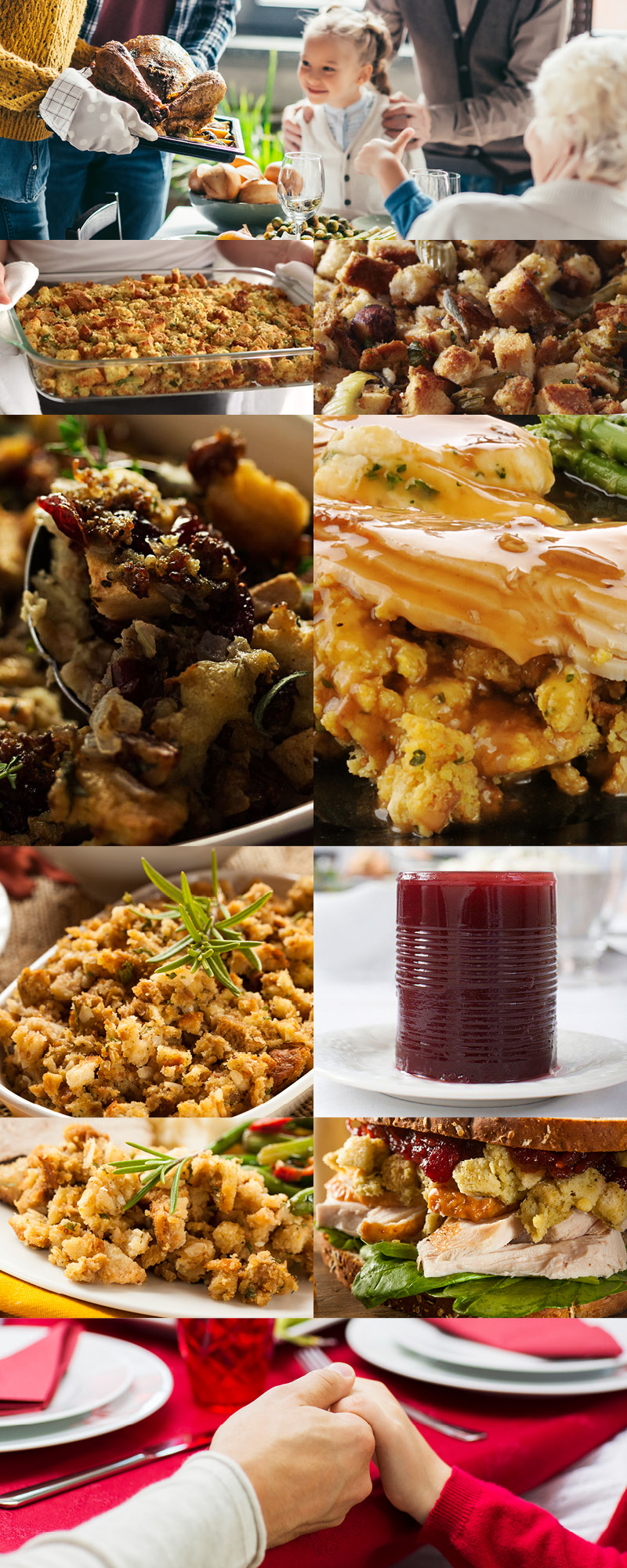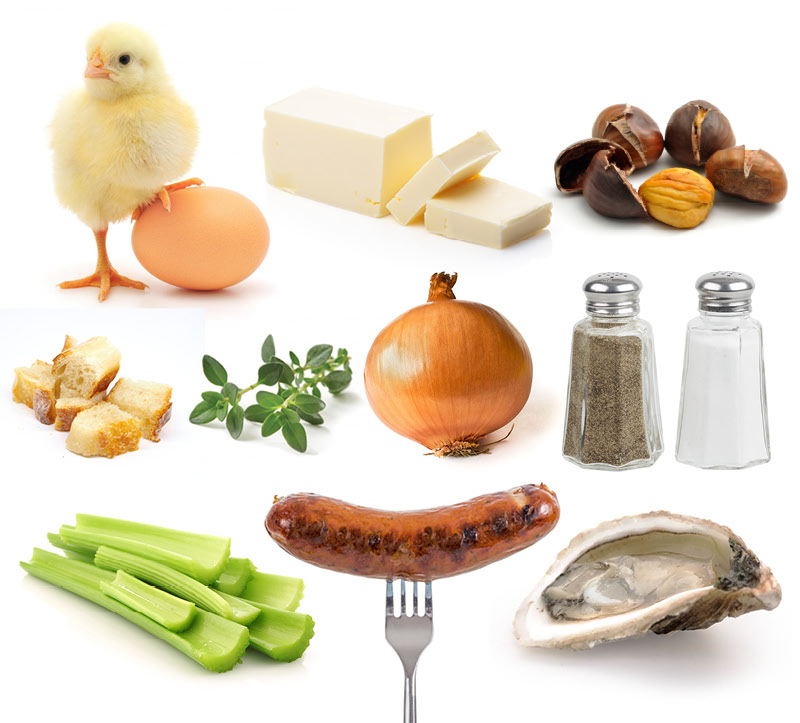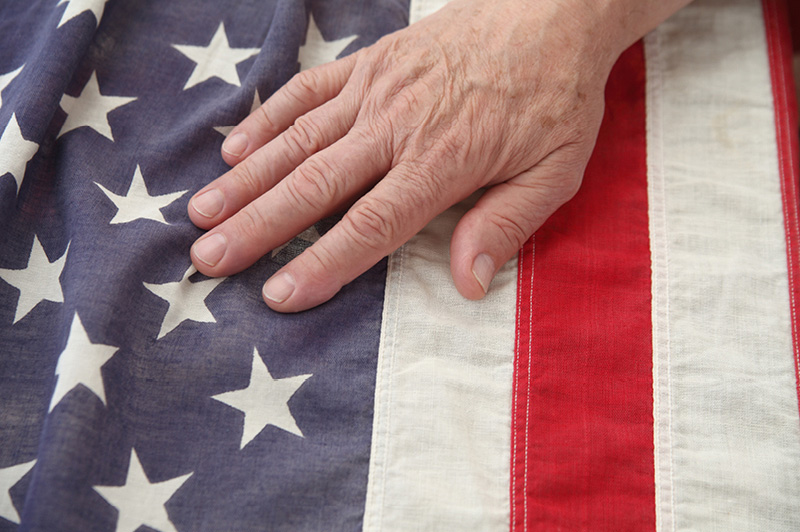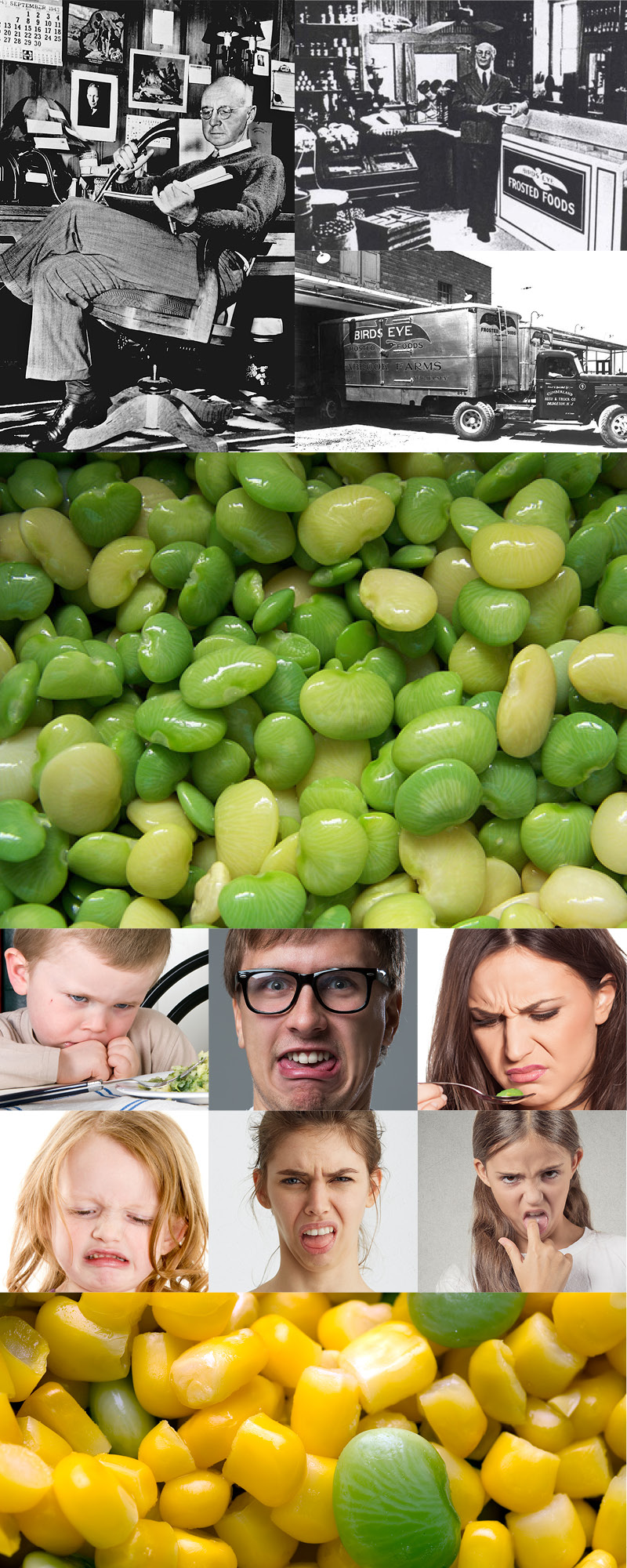Let’s Celebrate the New Year
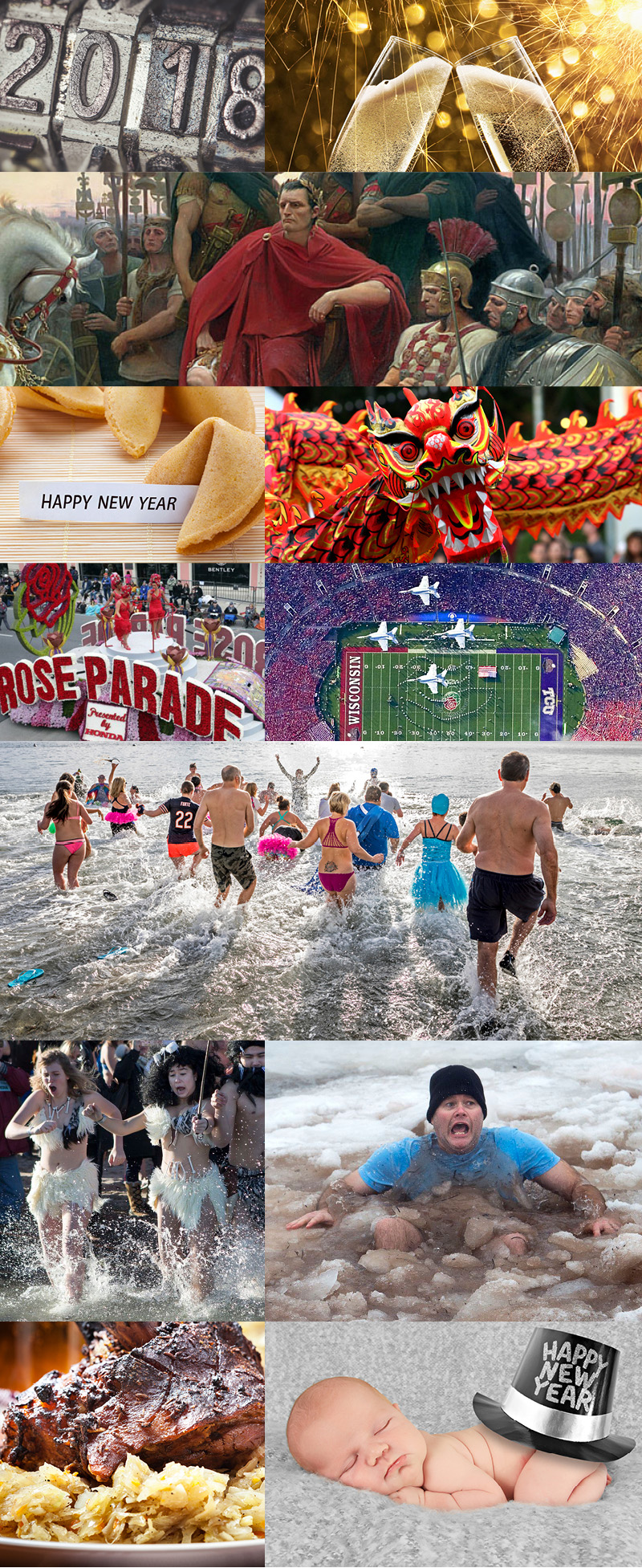
(top to bottom) A toast to welcome 2018; That man in red wearing the wreath on his head was responsible for many things but the most enduring is the Julian calendar he put into effect in 45 B.C. that we use to this day. Hail Caesar! (Nice salad, too); There are many cultures celebrating the new year at various times of the year with the Chinese New Year being the most famous; In the U.S. January 1 brings the Rose Parade, the Rose Bowl (this year features the Oklahoma Sooners vs the Georgia Bulldogs), the Polar Bear Plunge (Brrrrrrrrrrrrrrr!) and of course plenty of great FOOD! Happy New Year everybody!!
Well, here we are at the close of another year. WOW, things sure flew by. Seems like just the other day I was checking my new year’s resolutions to see how I did (not bad in fact). So, as we wrap up the week, head into the weekend and the New Year here is some fun trivia you can share. As many of you already know, I absolutely love offering bits of what my lovely wife Jackie likes to call “useless knowledge”. I on the other hand prefer the term “Eclectic Knowledge”. So, as you get ready for your New Year’s Day feast of Pork Roast, Dumplings and hopefully Sauerkraut, enjoy the following and share!
Now there’s nothing new about New Year’s. Festivals marking the beginning of the calendar have existed for millennia, and a few are still actively observed by millions of people around the world. These early New Year’s celebrations often had important social, political and religious implications, but in some cultures the holiday traditions were not so different from the champagne, parties and fireworks of today.
Babylonian Akitu
Following the first new moon after the vernal equinox in late March, the Babylonians of ancient Mesopotamia would honor the rebirth of the natural world with a multi-day festival called Akitu. This early New Year’s celebration dates back to around 2000 B.C., and is believed to have been deeply intertwined with religion and mythology. During the Akitu, statues of the gods were paraded through the city streets, and rites were enacted to symbolize their victory over the forces of chaos. Through these rituals the Babylonians believed the world was symbolically cleansed and recreated by the gods in preparation for the new year and the return of spring.
One fascinating aspect of the Akitu involved a kind of ritual humiliation endured by the Babylonian king. This peculiar tradition saw the king brought before a statue of the god Marduk, stripped of his royal regalia and forced to swear that he had led the city with honor. A high priest would then slap the monarch and drag him by his ears in the hope of making him cry. If royal tears were shed, it was seen as a sign that Marduk was satisfied and had symbolically extended the king’s rule. Some historians have since argued that these political elements suggest the Akitu was used by the monarchy as a tool for reaffirming the king’s divine power over his people.
Ancient Roman Celebration of Janus
The Roman New Year also originally corresponded with the vernal equinox, but years of tampering with the solar calendar eventually saw the holiday established on its more familiar date of January 1. For the Romans, the month of January carried a special significance. Its name was derived from the two-faced deity Janus, the god of change and beginnings. Janus was seen as symbolically looking back at the old and ahead to the new, and this idea became tied to the concept of transition from one year to the next. Romans would celebrate January 1 by giving offerings to Janus in the hope of gaining good fortune for the new year. This day was seen as setting the stage for the next twelve months, and it was common for friends and neighbors to make a positive start to the year by exchanging well wishes and gifts of figs and honey with one another. According to the poet Ovid, most Romans also chose to work for at least part of New Year’s Day, as idleness was seen as a bad omen for the rest of the year.
Ancient Egyptian Wepet Renpet
Ancient Egyptian culture was closely tied to the Nile River, and it appears their New Year corresponded with its annual flood. According the Roman writer Censorinus, the Egyptian New Year was predicted when Sirius—the brightest star in the night sky—first became visible after a 70-day absence. Better known as a heliacal rising, this phenomenon typically occurred in mid-July just before the annual inundation of the Nile River, which helped ensure that farmlands remained fertile for the coming year. Egyptians celebrated this new beginning with a festival known as Wepet Renpet, which means “opening of the year.” The New Year was seen as a time of rebirth and rejuvenation, and it was honored with feasts and special religious rites. Not unlike many people today, the Egyptians may have also used this as an excuse for getting a bit tipsy. Recent discoveries at the Temple of Mut show that during the reign of Hatshepsut the first month of the year played host to a “Festival of Drunkenness.” This massive party was tied to the myth of Sekhmet, a war goddess who had planned to kill all of humanity until the sun god Ra tricked her into drinking herself unconscious. In honor of mankind’s salvation, the Egyptians would celebrate with music, lewd behavior, revelry and perhaps most important of all, copious amounts of beer.
Chinese New Year
One of the oldest traditions still celebrated today is Chinese New Year, which is believed to have originated over 3,000 years ago during the Shang Dynasty. The holiday began as a way of celebrating the new beginnings of the spring planting season, but it later became entangled with myth and legend. According to one popular tale, there was once a bloodthirsty creature called Nian—now the Chinese word for “year”—that preyed on villages every New Year. In order to frighten the hungry beast, the villagers took to decorating their homes with red trimmings, burning bamboo and making loud noises. The ruse worked, and the bright colors and lights associated with scaring off Nian eventually became integrated into the celebration. Festivities traditionally last 15 days and tend to center on the home and the family. People clean their houses to rid them of bad luck, and some repay old debts as a way of settling the previous year’s affairs. In order to encourage an auspicious start to the year they also decorate their doors with paper scrolls and gather with relatives for a feast. Following the invention of gunpowder in the 10th century, the Chinese were also the first to ring in the New Year with fireworks. Since Chinese New Year is still based on a lunar calendar that dates back to the second millennium BC, the holiday typically falls in late January or early February on the second new moon after the winter solstice. Each year is associated with one of 12 zodiacal animals: the rat, ox, tiger, rabbit, dragon, snake, horse, goat, monkey, rooster, dog and pig. 2018 is the year of the year of the dog, and begins February 16th.
Nowruz
While it is still celebrated in Iran and other parts of the Middle East and Asia, the roots of Nowruz (or “New Day”) reach far back into antiquity. Often called the “Persian New Year,” this 13-day spring festival falls on or around the vernal equinox in March and is believed to have originated in modern day Iran as part of the Zoroastrian religion. Official records of Nowruz did not appear until the 2nd century, but most historians believe its celebration dates back at least as far as the 6th century B.C. and the rule of the Achaemenid Empire. Unlike many other ancient Persian festivals, Nowruz persisted as an important holiday even after Iran’s conquest by Alexander the Great in 333 BC and the rise of Islamic rule in the 7th century A.D. Ancient observances of Nowruz focused on the rebirth that accompanied the return of spring. Monarchs would use the holiday to host lavish banquets, dispense gifts and hold audiences with their subjects. Other traditions included feasts, exchanging presents with family members and neighbors, lighting bonfires, dyeing eggs and sprinkling water to symbolize creation. One unique ritual that arose around the 10th century involved electing a “Nowruzian Ruler”: a commoner who would pretend to be king for several days before being “dethroned” near the end of the festival. Nowruz has evolved considerably over time, but many of its ancient traditions—particularly the use of bonfires and colored eggs—remain a part of the modern holiday, which is observed by an estimated 300 million people each year.
American Traditions
New Year’s Day is a national holiday celebrated on January 1st, the first day of the New Year, following both the Gregorian and the Julian calendar. This New Years’ holiday is often marked by fireworks, parades, and reflection upon the last year while looking ahead to the future’s possibilities. Many people celebrate New Year’s in the company of loved ones, involving traditions meant to bring luck and success in the upcoming year. Many Cultures celebrate this happy day in their own unique way. Typically, the customs and traditions of happy New Years Day involve celebrating with champagne and a variety of different foods. New Years marks a date of newly found happiness and a clean slate. For many celebrating New Years, it is their opportunity to learn from the prior year and make positive changes in their life. It wasn’t until Julius Caesar implemented the Julian calendar that January 1st became the common day for the celebration. While early celebrations were more paganistic in nature, celebrating Earth’s cycles, Christian tradition celebrates the Feast of the Circumcision of Christ on New Year’s Day. Roman Catholics also often celebrate Solemnity of Mary, Mother of God, a feast honoring Mary. However, in the twentieth century, the holiday grew into its own celebration and mostly separated from the common association with religion. It has become a holiday associated with nationality, relationships, and introspection rather than a religious celebration, although many people do still follow older traditions.
While celebration varies all over the world, common traditions include:
- Making resolutions or goals to improve one’s life. Common resolutions concern diet, exercise, bad habits, and other issues concerning personal wellness. A common view is to use the first day of the year as a clean slate to improve one’s life.
- A gathering of loved ones: Here you’ll typically find champagne, feasting, confetti, noise makers, and other methods of merriment fireworks, parades, concerts.
- Famous parades include London’s New Year’s Day Parade and the Rose Parade in Pasadena, California.
- Superstitions concerning food or visitors to bring luck.
- Serving circle-shaped foods, which symbolize cycles.
- A household’s first visitor of the year—tradition states that if a tall, dark-haired stranger is the first to walk through your door, called the First Footer or Lucky Bird, you’ll have good luck all year.
- Don’t let anything leave the house on New Year’s, except for people. Tradition say’s don’t take out the trash and leave anything you want to take out of the house on New Year’s outside the night before. If you must remove something, make sure to replace it by bringing an item into the house. These policies of balance apply in other areas as well—avoiding paying bills, breaking anything, or shedding tears.
- Toasts typically concern gratefulness for the past year’s blessings, hope and luck or the future, and thanking guests for their New Year’s company. In coastal regions, running into a body of water or splashing water on one another, symbolizing the cleansing, “rebirth” theme associated with the holiday.
- American Citizens often celebrate with a party featuring toasting, drinking and fireworks late into the night before the New Year, where the gathering counts down the final seconds to January 1st. Some might even get a kiss at midnight. Many English-speaking countries play “Auld Lang Syne,” a song celebrating the year’s happy moments. Americans often make resolutions and watch the Time Square Ball drop in New York City. Although much of this celebration occurs the night before, the merrymaking typically continues to New Year’s Day.
- Football is a common fixture on New Year’s Day in America, usually the day of the Rose Bowl. Some foods considered “lucky” to eat during the festivities include: Circular shaped foods, black-eyed peas, cabbage, pork and a big plate of chocolate/peanut butter buckeye’s of course(GO BUCS!!)
Elsewhere
The French typically celebrate New Year’s with a feast and a champagne toast, marking the first moments of New Year’s Day with kisses under the mistletoe, which most other cultures associate with Christmas celebrations. The French also consider the day’s weather as a forecast for the upcoming year’s harvest, taking into account aspects like wind direction to predict the fruitfulness of crops and fishing.
In the Philippines, celebrations are very loud, believing that the noise will scare away evil beings. There is often a midnight feast featuring twelve different round fruits to symbolize good luck for the twelve months of the year. Other traditional foods include sticky rice and noodles, but not chicken or fish because these animals are food foragers, which can be seen as bad luck for the next year’s food supply. Greeks celebrate New Year’s Day with card games and feasting. At midnight, the lights are turned off, followed by the Basil’s Pie, which contains a coin. Whoever gets the piece of pie containing the coin wins luck for the next year.
The Soviet Union’s New Year’s Day celebrations have been greatly affected by the Union’s history. As religion was suppressed and Christmas celebrations were banned, New Year’s, or Novi God celebrations often include Christmas traditions such as decorated trees, which were reconsidered as New Year Fir Trees. As the suppression left, these traditions stayed part of the New Year’s Day celebration. The holiday is also celebrated with feasts, champagne, and wishes.
Spaniards celebrate New Year’s Day with the custom of eating twelve grapes, each eaten at a clock-stroke at midnight.
In colder countries close to water, such as Canada, parts of the United States, the United Kingdom, and the Netherlands, it is customary to organize cold-water plunges. These plunges and races, sometimes called a Polar Bear Plunge, often raise money for charity or awareness for a cause. In full disclosure, I will be enjoying time with my family in front of the fireplace!

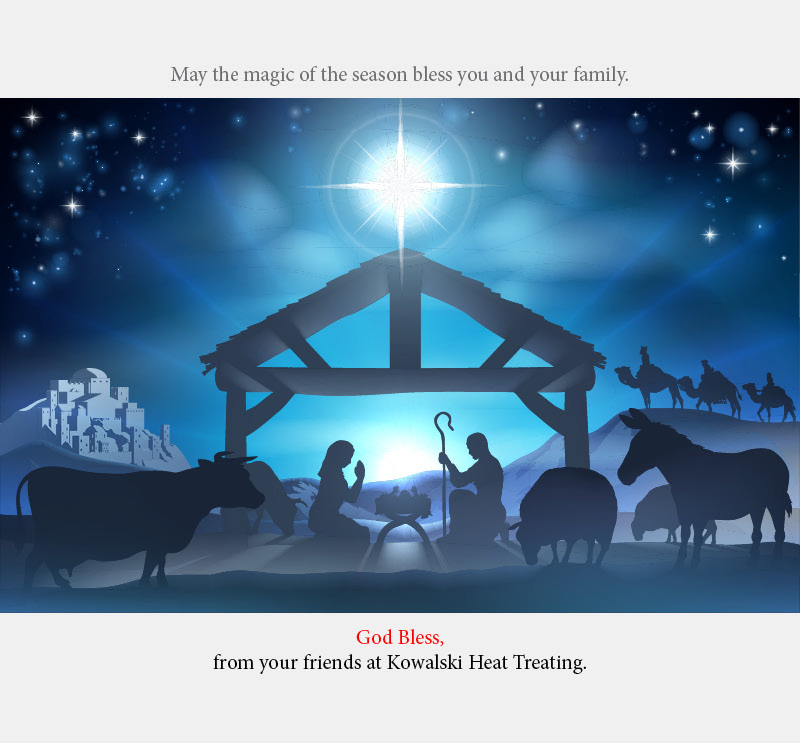
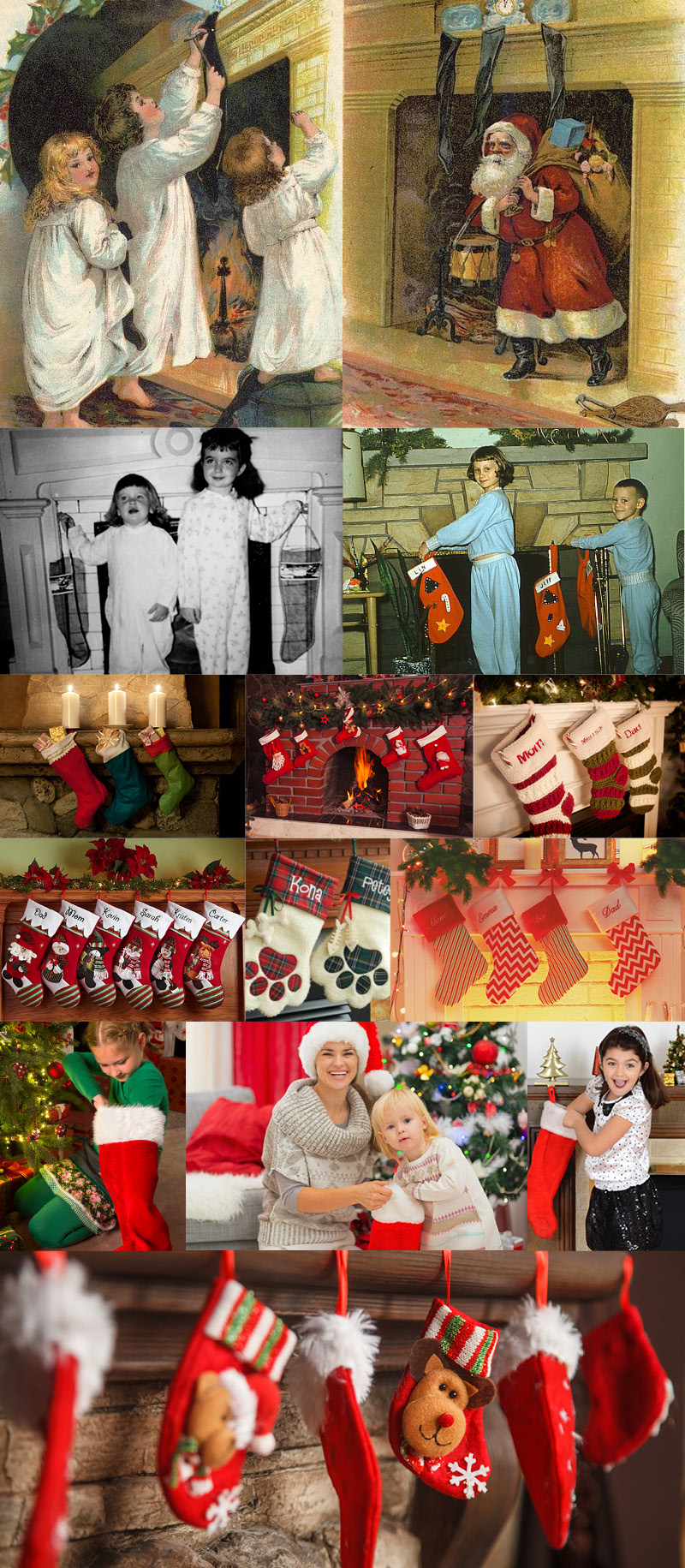
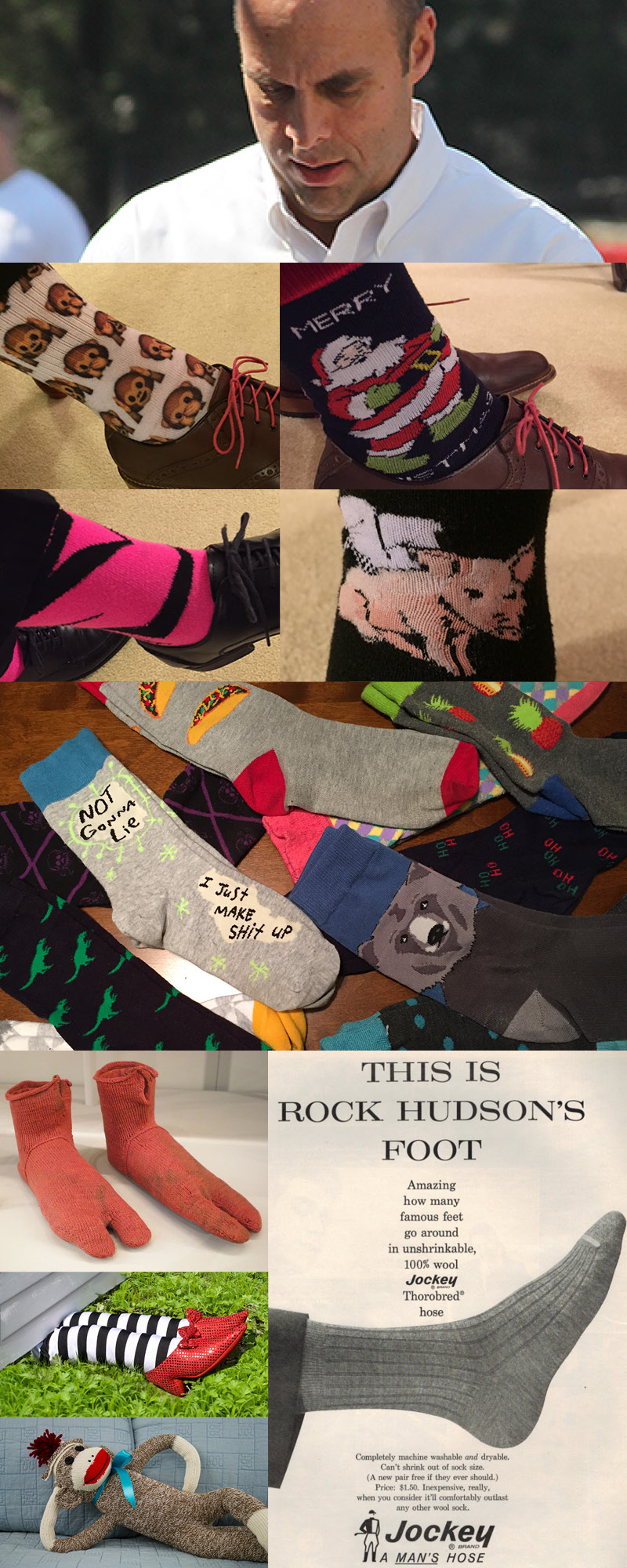

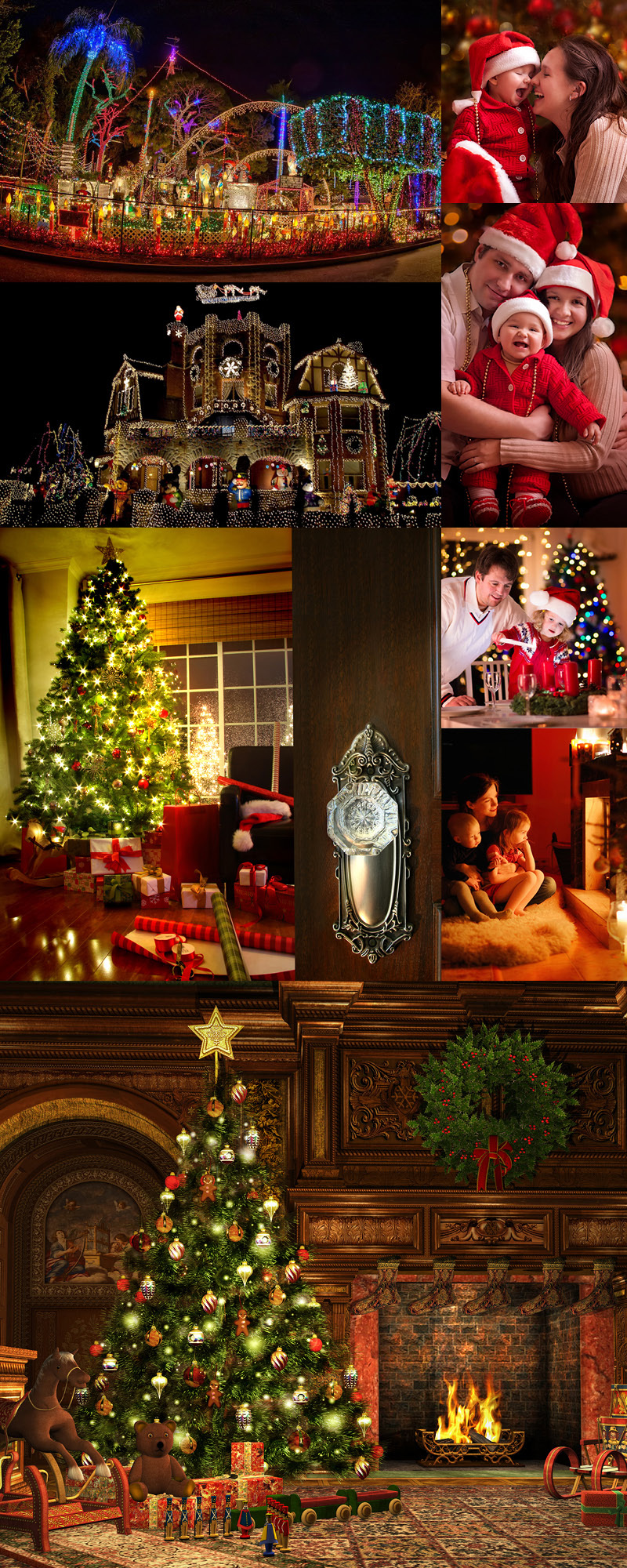 Decorating the house inside and out is so much fun. Sharing in this season gives me a warm feeling, too. (and I do like warm) So whether you go all out or keep it manageable, be sure to enjoy your family, friends and maybe make a donation to folks & organizations who need our help.
Decorating the house inside and out is so much fun. Sharing in this season gives me a warm feeling, too. (and I do like warm) So whether you go all out or keep it manageable, be sure to enjoy your family, friends and maybe make a donation to folks & organizations who need our help.

